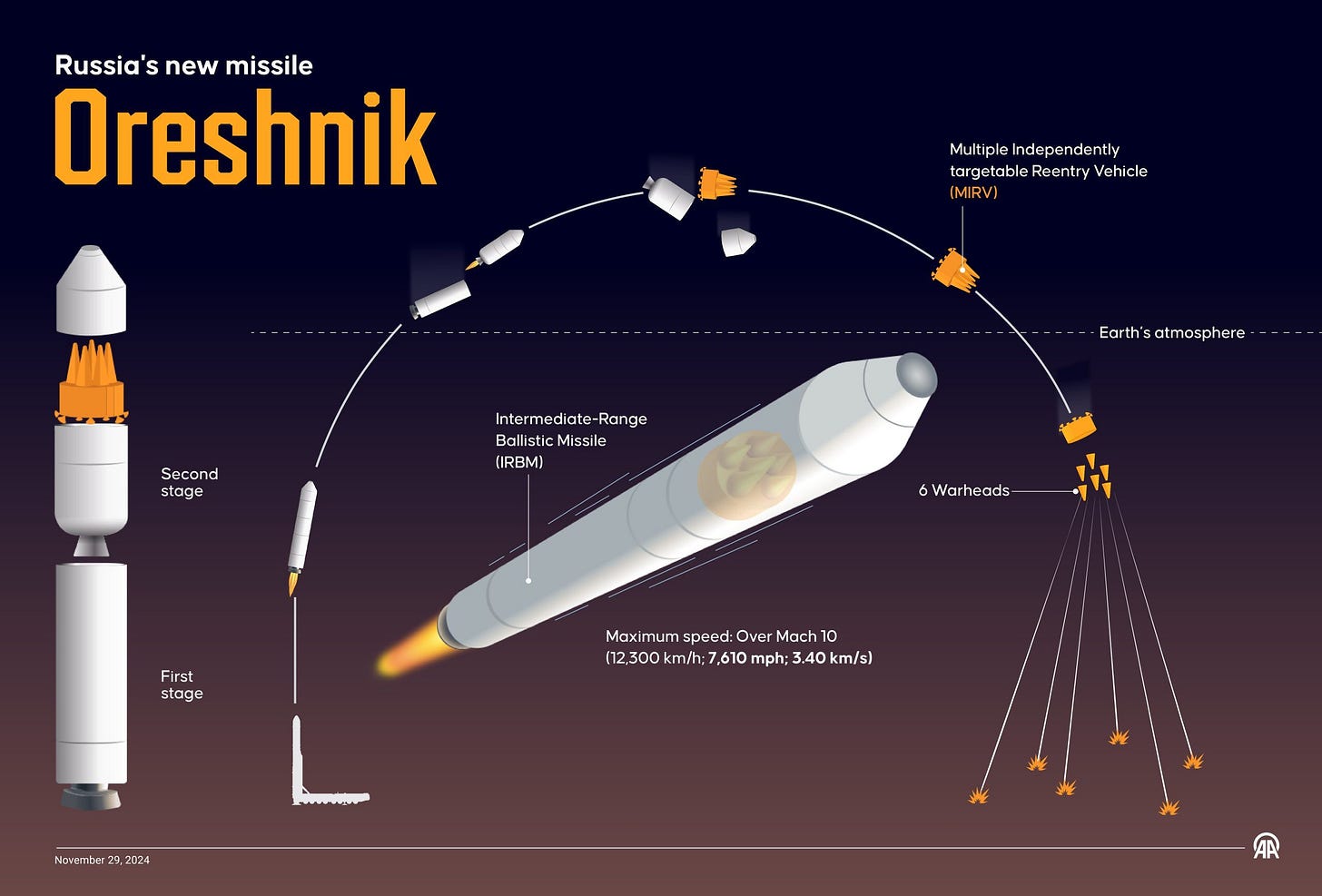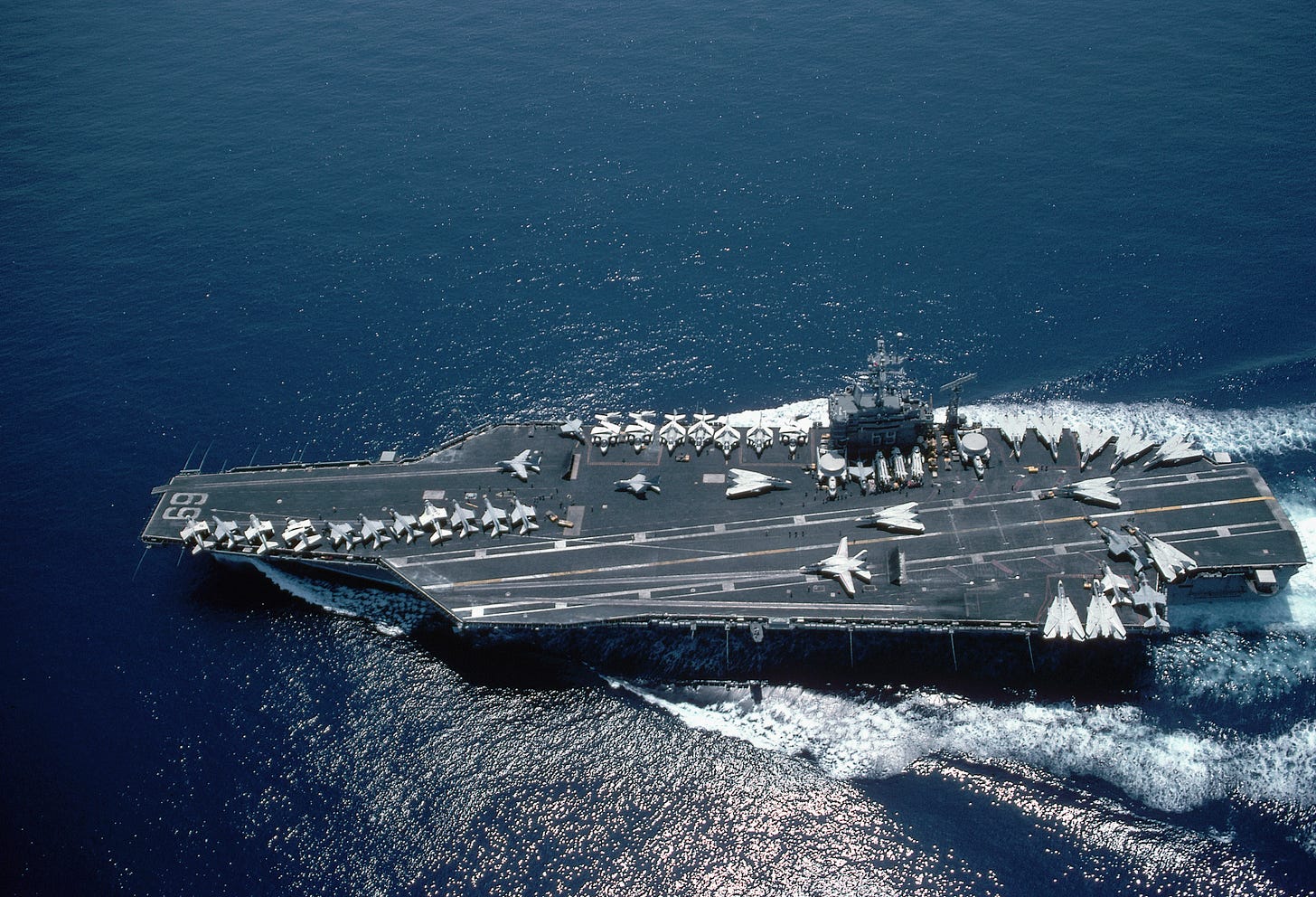Escalation Dominance
Taiwan’s energy vulnerabilities hand China the trump card in any conflict.
“We often give our enemies the means for our own destruction.” – Aesop
On November 21, 2024, Russia used established nuclear risk reduction channels to warn the US that it would soon launch a ballistic missile and that this launch should not be interpreted as a nuclear strike. Approximately 30 minutes later, the world was introduced to the Oreshnik hypersonic intermediate-range ballistic missile, allegedly capable of reaching Mach 10 speed. Russian President Vladimir Putin confidently asserted that the weapon, soon to enter mass production, is beyond the reach of any air defense system.
The Oreshnik targeted the PA Pivdenmash facility in Dnipro, Ukraine, striking the state-owned aerospace and defense manufacturing site shortly after 5:00 am local time. Even though the missile carried only dummy warheads—the launch was intended as a warning to President Joe Biden to cease facilitating Ukraine’s use of long-range missiles against targets deep inside Russia—the sheer kinetic energy of the Oreshnik is rumored to have caused significant damage. Reports circulated on Russian social media claiming vast swaths of underground facilities were instantly pulverized, although Western officials have disputed such speculation. The story was underreported in the legacy media, and many of you are probably learning about this weapon for the first time here.
Among the many catastrophic consequences of the war in Ukraine is how close Russia and China have become on both economic and military fronts. Despite centuries of conflict, the two superpowers make for a formidable combination—one that matches Russia’s vast commodity supplies with China’s seemingly endless appetite for consuming them. Driving a wedge between them has been a consistent goal of the Atlanticists, for good reason, yet that strategy now appears fatally compromised with scant doubt that the two countries are collaborating on advanced weaponry. The new US Secretary of Defense certainly seems concerned:
“US Defense Secretary Pete Hegseth have [sic] raised alarms about China’s growing military capabilities. In particular, he pointed out the dangerous potential of China's hypersonic missiles, which could reportedly destroy US aircraft carriers in just 20 minutes. This bold claim highlights the changing landscape of modern warfare and the serious threat posed by these advanced missiles…
In any military conflict, the loss of aircraft carriers would be catastrophic for the US, as they serve as key assets in global operations. Hegseth’s warning emphasizes the growing concern over the vulnerability of these ships in the face of China’s rapidly advancing missile technology.”
As the tariff war with China continues to spiral, so too does the risk of a hot one—especially as it dawns on President Trump and his team that China, not the US, holds escalation dominance. In a thoughtfully argued piece in Foreign Affairs, Adam Posen, president of the Peterson Institute for International Economics, highlights the asymmetry in trade between the two countries, noting that focusing on volume alone misreads the balance of power. Posen argues that the goods China buys from the US—soybeans, liquefied natural gas (LNG), and other bulk commodities—can easily be sourced elsewhere on the global market, whereas China supplies the US with a vast array of goods over which it holds an effective monopoly. We have long argued similar points in these pages.
Should a kinetic conflict arise, the spark that ignites the inferno will almost certainly involve Taiwan—a country that China claims as sovereign territory, but which the US has long implied it would defend in the event of an attack. (The formal mutual defense treaty between the US and Taiwan expired in 1979, but few in China doubt a US response should hostilities commence.) Here too, one must wonder which side holds dominance. If Hegseth’s analysis of China’s ballistic missile capabilities is correct, it could attack targets more devastating than a US aircraft carrier to end the question of Taiwan.
China has flashed signals that it appreciates Taiwan’s points of submission and has issued warnings it will not hesitate to eliminate them. Those vulnerabilities could place the US in a bind, forced to choose between resorting to nuclear weapons or accepting defeat in another proxy war with the Russia-China axis. Let’s examine the situation, no doubt escalating under the pressure of Trump’s trade war.



